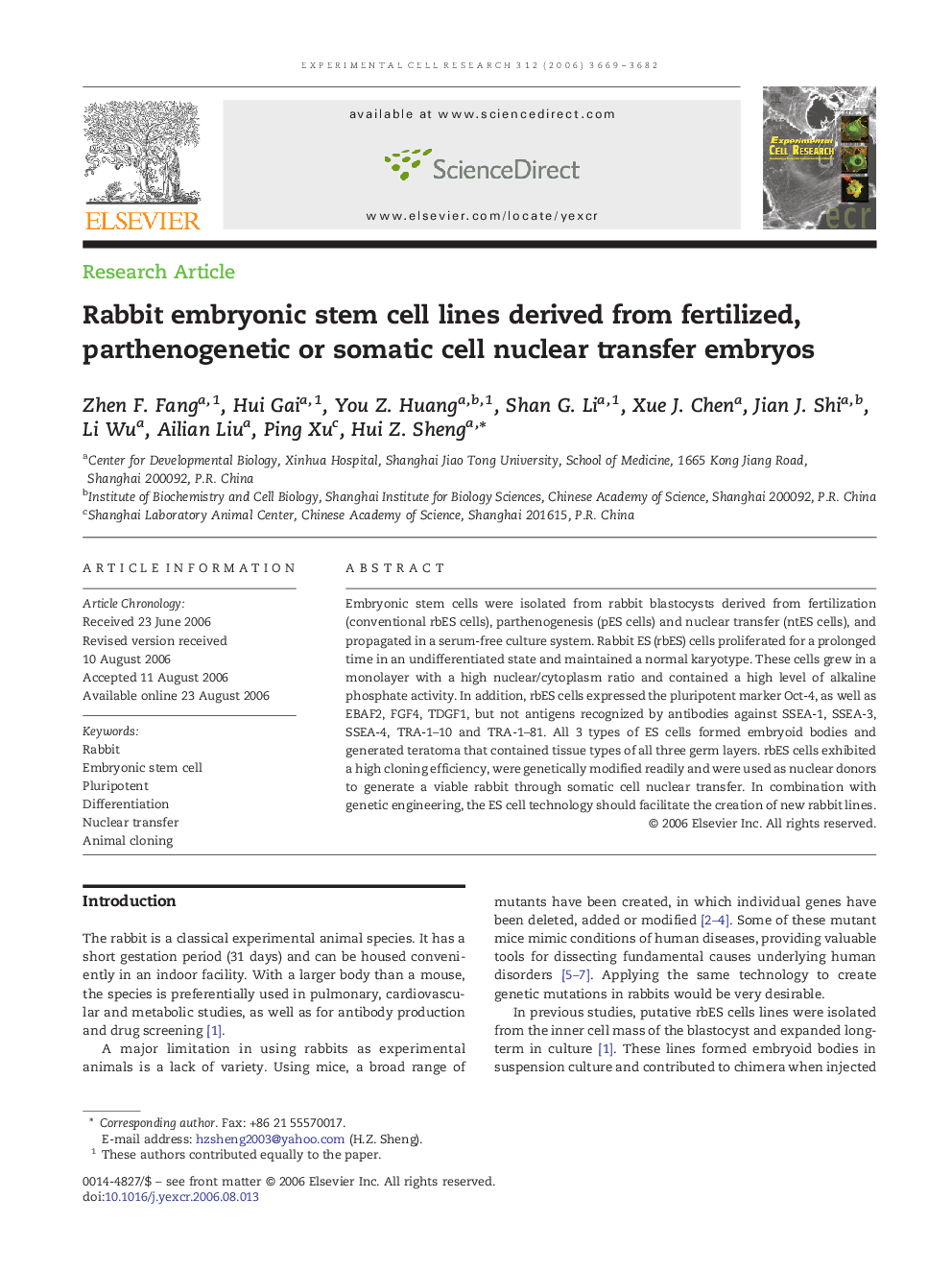| Article ID | Journal | Published Year | Pages | File Type |
|---|---|---|---|---|
| 2133134 | Experimental Cell Research | 2006 | 14 Pages |
Embryonic stem cells were isolated from rabbit blastocysts derived from fertilization (conventional rbES cells), parthenogenesis (pES cells) and nuclear transfer (ntES cells), and propagated in a serum-free culture system. Rabbit ES (rbES) cells proliferated for a prolonged time in an undifferentiated state and maintained a normal karyotype. These cells grew in a monolayer with a high nuclear/cytoplasm ratio and contained a high level of alkaline phosphate activity. In addition, rbES cells expressed the pluripotent marker Oct-4, as well as EBAF2, FGF4, TDGF1, but not antigens recognized by antibodies against SSEA-1, SSEA-3, SSEA-4, TRA-1–10 and TRA-1–81. All 3 types of ES cells formed embryoid bodies and generated teratoma that contained tissue types of all three germ layers. rbES cells exhibited a high cloning efficiency, were genetically modified readily and were used as nuclear donors to generate a viable rabbit through somatic cell nuclear transfer. In combination with genetic engineering, the ES cell technology should facilitate the creation of new rabbit lines.
